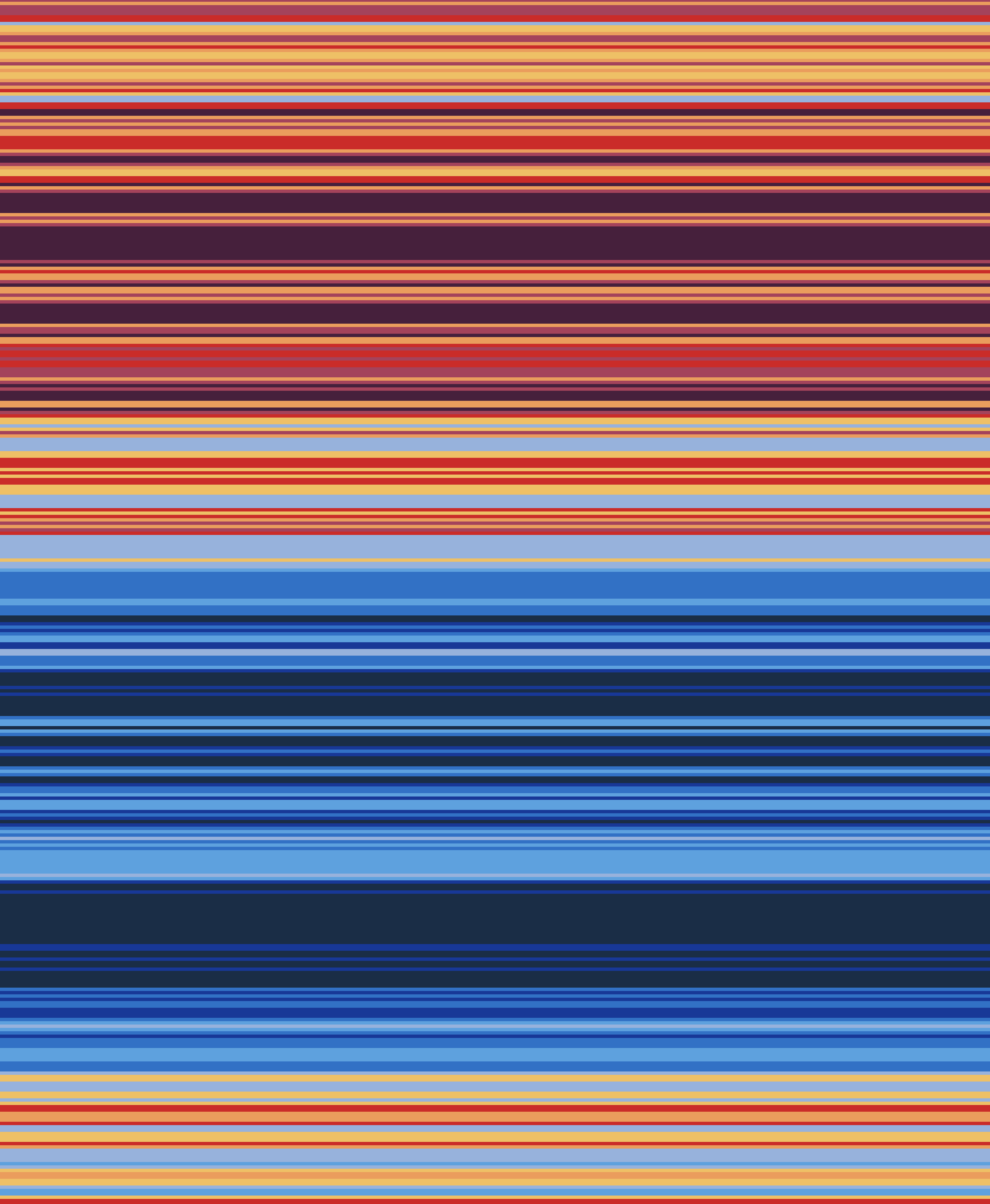
What is a Temperature Blanket?
Imagine turning weather data into a cozy and colorful work of art! That’s what a temperature blanket is: a crafty way to show how the temperature of a place changes over time. Usually one row or section represents each day of a year, using different yarn colors for different weather conditions. There are many ways to make a temperature blanket, but they all have one thing in common: the color of each section is based on meteorological events.
Make a Temperature Blanket
For a detailed guide, read How to Plan a Temperature Blanket. Here's a general overview:
1) Pick Your Colors
The first step to making a temperature blanket is to decide what colors of yarn you want to use and what temperatures they will represent. You can use as many or as few colors as you like. Then make a temperature gauge (also called a color gauge or color chart) to keep track of your choices.
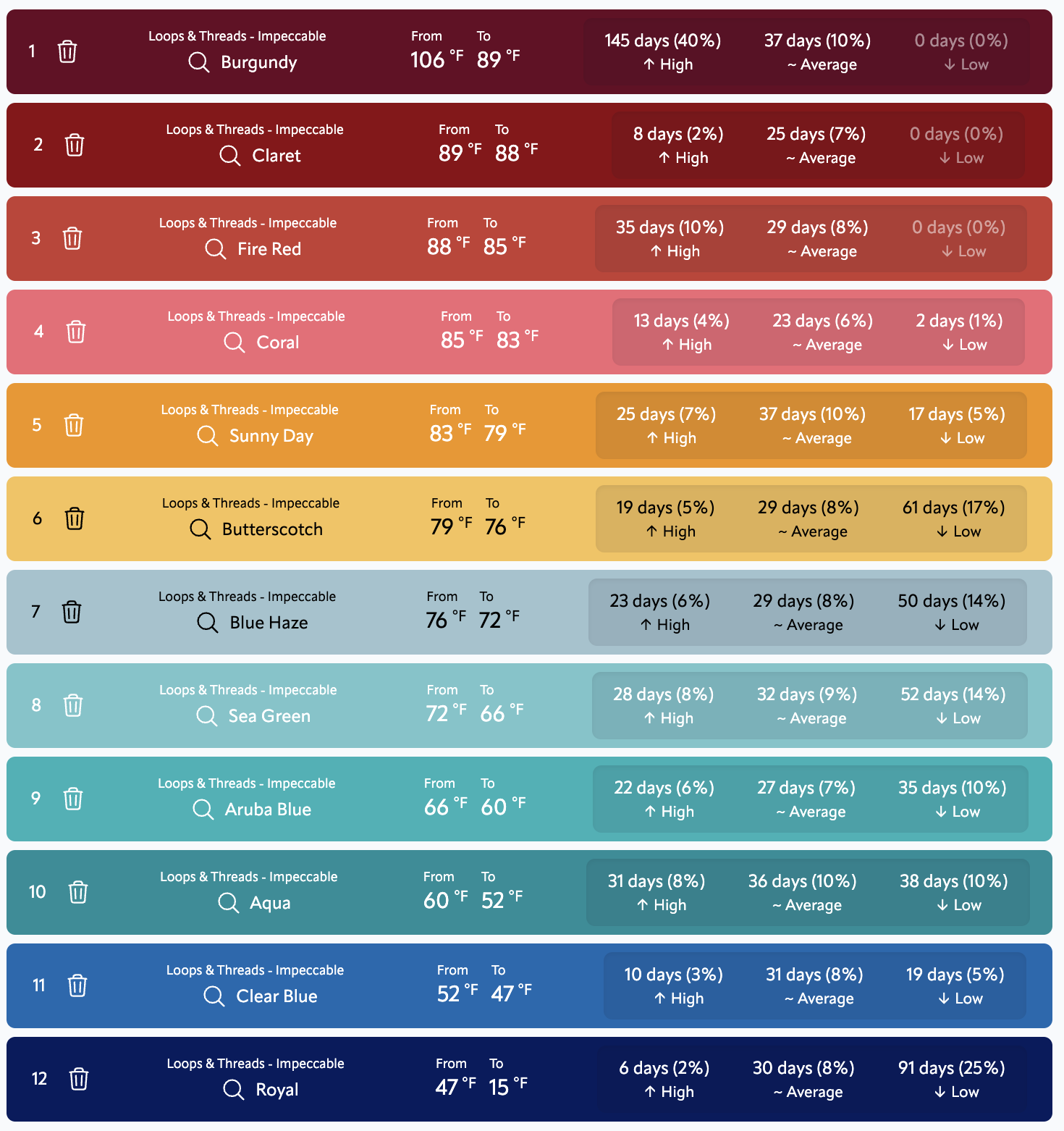 Create a Yarn Palette
Create a Yarn Palette 2) Keep Track of the Weather
Next, write down the temperature over time (or look up the weather history using the Project Planner). You can use the average temperature of the day, the highest or lowest temperature, or something else, like rain or snow. You can even use more than one weather factor for each day to make your pattern more interesting. It’s up to you how or what you want to track; just make sure you do it consistently.
3) Create Your Project
When you have the weather data you need, for each day, crochet or knit a part of your blanket with the yarn color that matches that day’s temperature, based on your color gauge.
You can make any pattern you want. A typical temperature blanket has one row for each day, but you can also try zigzags, squares, diagonal designs, mix the highest and lowest temperature in the same part, and many other options. The sky is the limit.
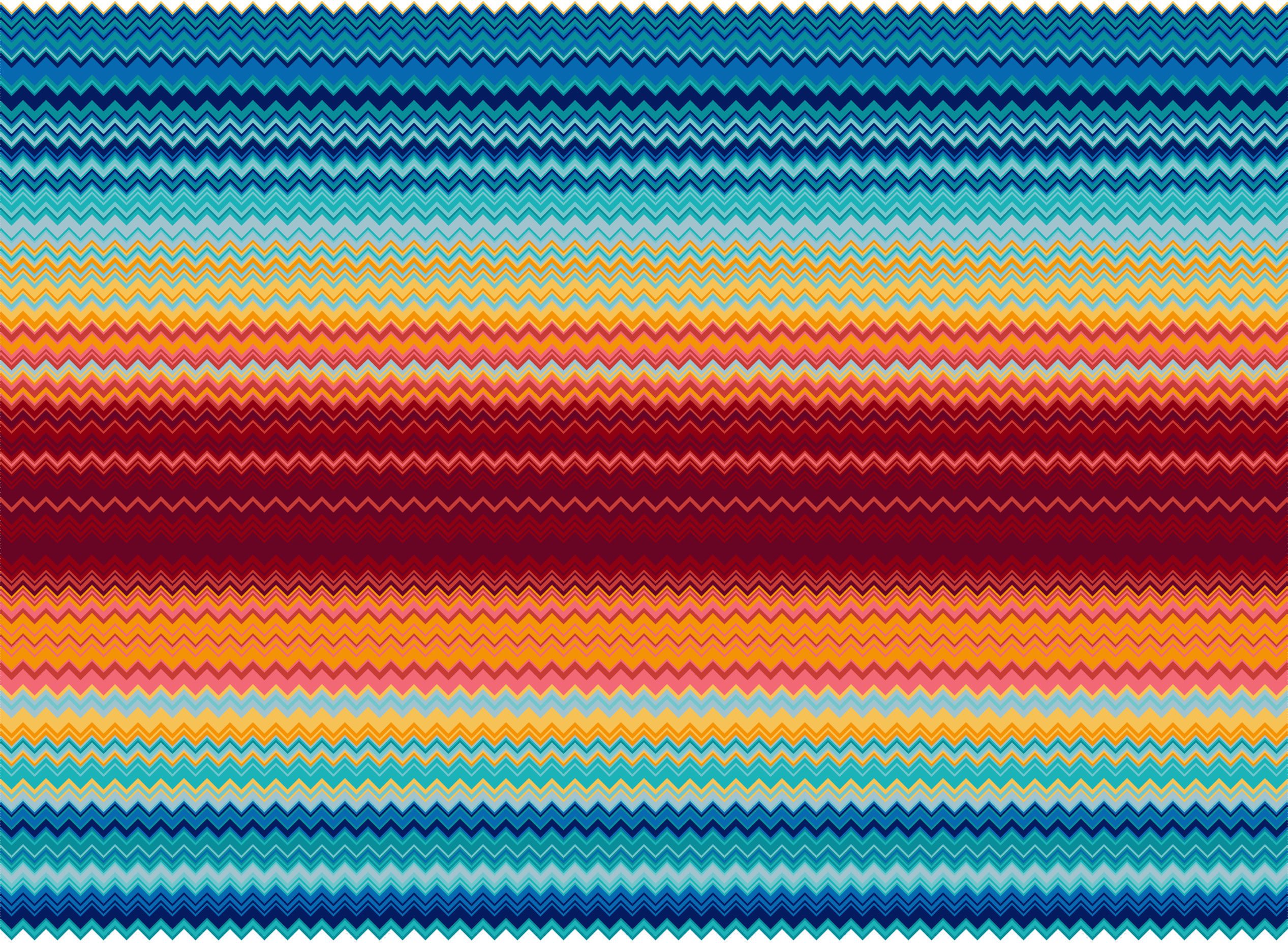
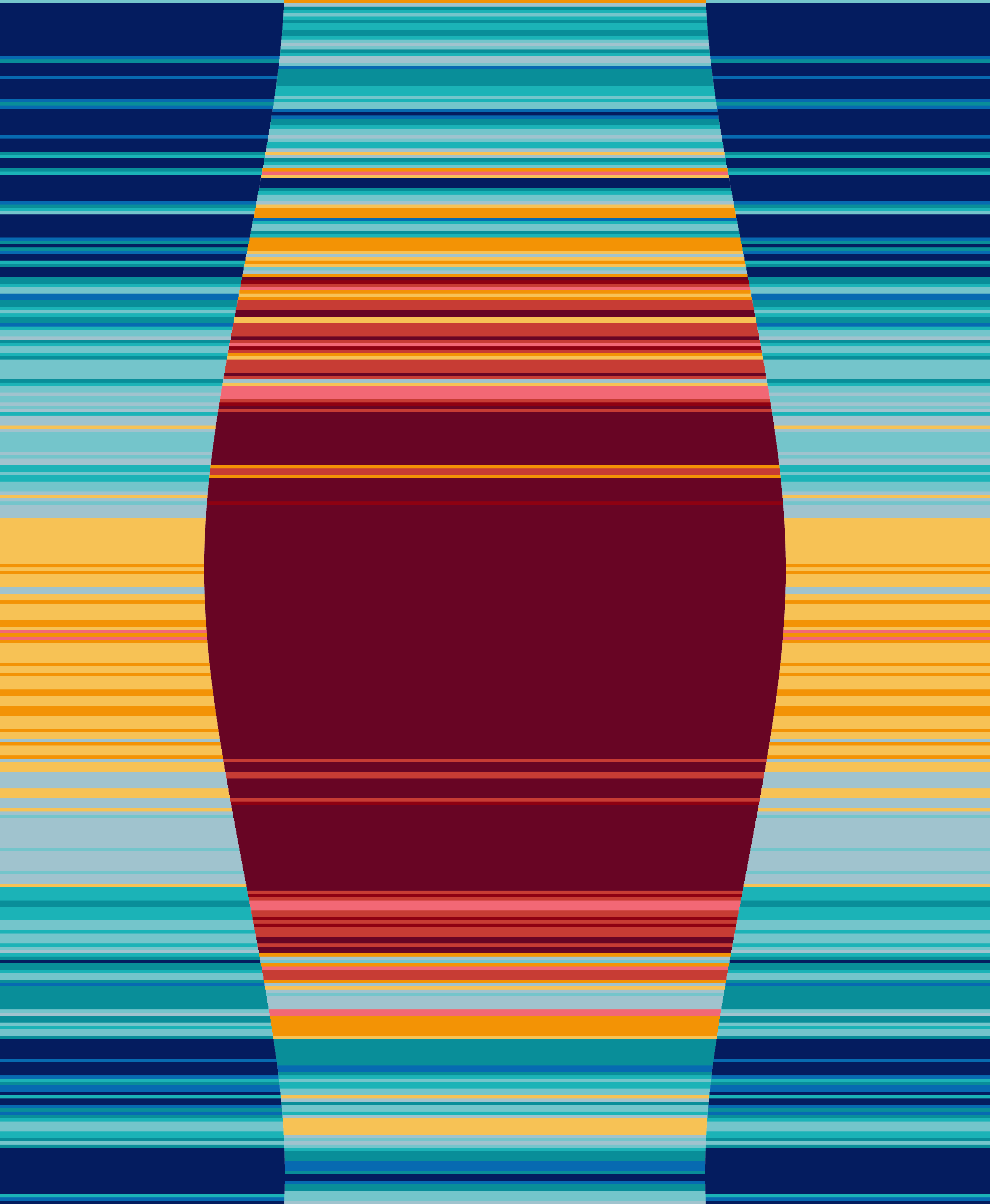
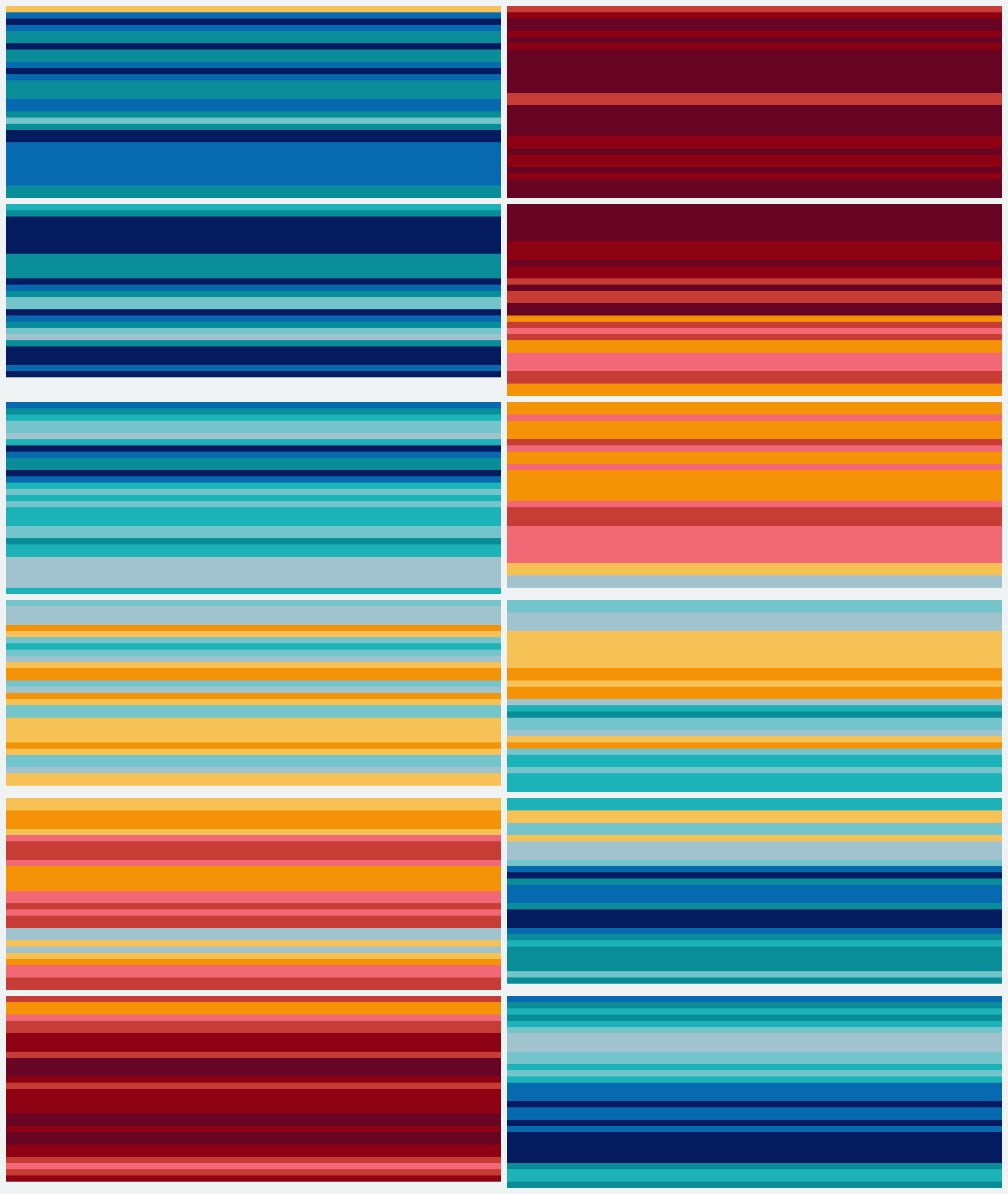
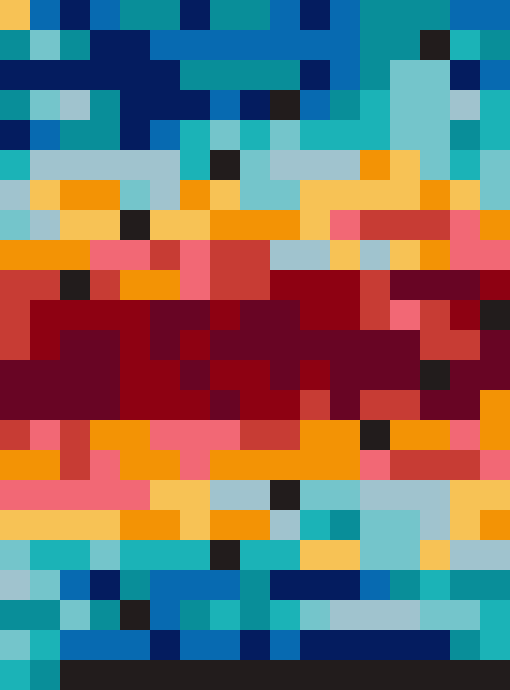
Variations
Temperature blankets are unique and completely customizable. To make your project, you could use any of the following principles:
- - Mix in other weather events to the pattern, like rain, snow, or even daytime
- - Group or mark sections to show weeks, months, or other time frames
- - Put the color gauge in the project itself
- - Put more than one location in the pattern
- - Use the color gauge to crochet or knit something else, like a scarf, rug, or sweater
More Resources
The internet is full of inspiration and tips for making temperature blankets. If you want to make one or learn more about them, here are some places to check out:
- wunderground.com – weather data
- 17 Temperature Blanket Ideas and Alternatives [FREE Patterns] from favecrafts.com – inspiration and patterns
- Temp Blanket Tracker (Google Doc) – temperature tracking, color gauges
- reddit.com/r/temperatureblanket/ – community discussion, project help, inspiration
- Search for temperature blanket Facebook groups – community discussion, yarn alongs, project help, inspiration